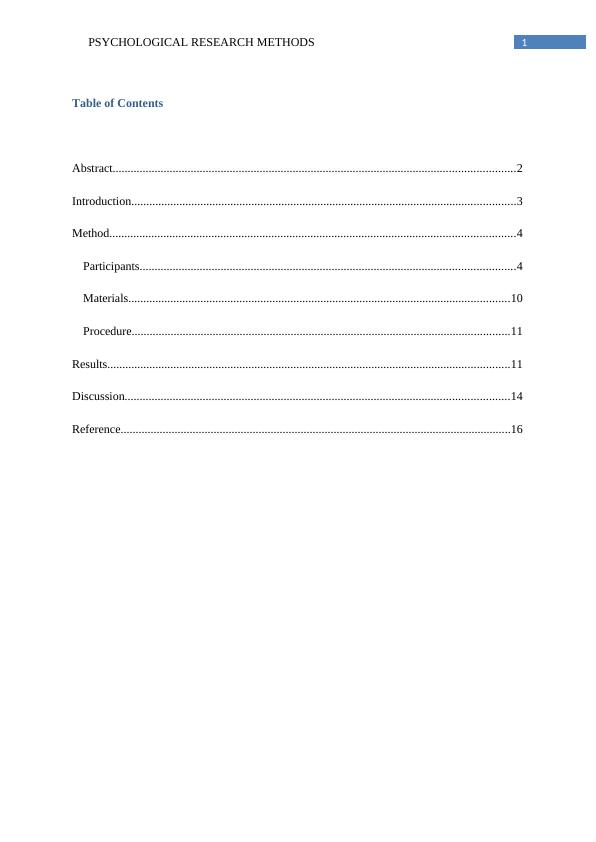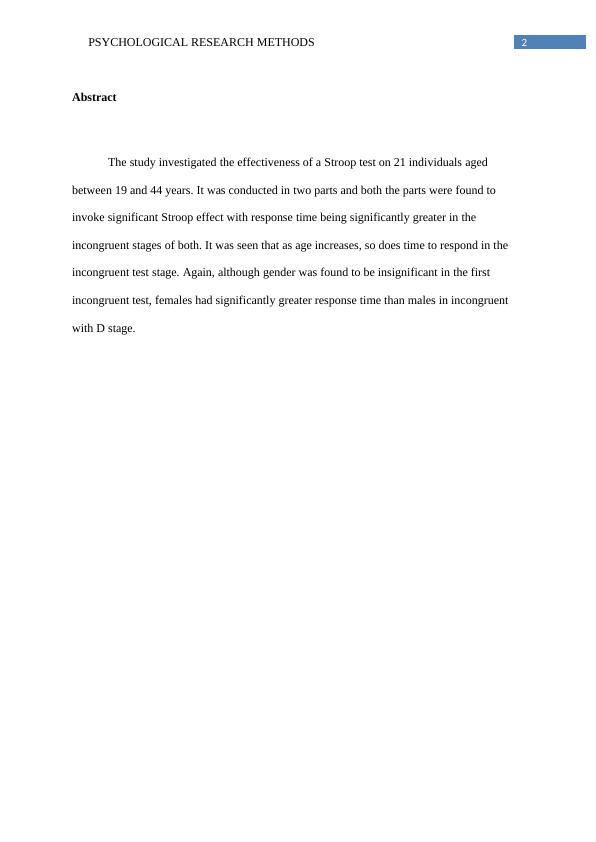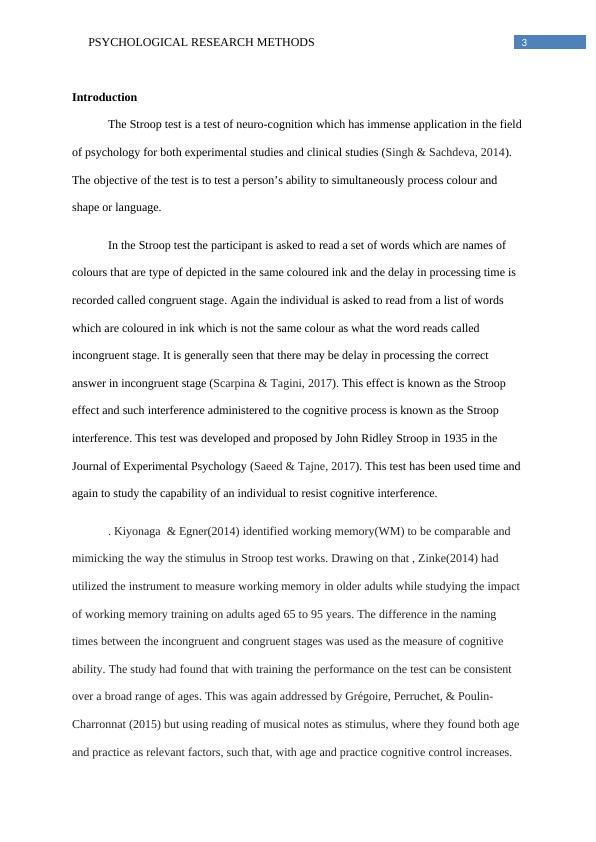Psychological Research Methods
18 Pages2535 Words71 Views
Added on 2021-05-27
Psychological Research Methods
Added on 2021-05-27
ShareRelated Documents
Running head: PSYCHOLOGICAL RESEARCH METHODSPSYCHOLOGICAL RESEARCH METHODSName of StudentName of UniversityAuthor Note

1PSYCHOLOGICAL RESEARCH METHODSTable of ContentsAbstract......................................................................................................................................2Introduction................................................................................................................................3Method.......................................................................................................................................4Participants.............................................................................................................................4Materials...............................................................................................................................10Procedure..............................................................................................................................11Results......................................................................................................................................11Discussion................................................................................................................................14Reference..................................................................................................................................16

2PSYCHOLOGICAL RESEARCH METHODSAbstractThe study investigated the effectiveness of a Stroop test on 21 individuals aged between 19 and 44 years. It was conducted in two parts and both the parts were found to invoke significant Stroop effect with response time being significantly greater in the incongruent stages of both. It was seen that as age increases, so does time to respond in the incongruent test stage. Again, although gender was found to be insignificant in the first incongruent test, females had significantly greater response time than males in incongruent with D stage.

3PSYCHOLOGICAL RESEARCH METHODSIntroductionThe Stroop test is a test of neuro-cognition which has immense application in the fieldof psychology for both experimental studies and clinical studies (Singh & Sachdeva, 2014). The objective of the test is to test a person’s ability to simultaneously process colour and shape or language. In the Stroop test the participant is asked to read a set of words which are names of colours that are type of depicted in the same coloured ink and the delay in processing time is recorded called congruent stage. Again the individual is asked to read from a list of words which are coloured in ink which is not the same colour as what the word reads called incongruent stage. It is generally seen that there may be delay in processing the correct answer in incongruent stage (Scarpina & Tagini, 2017). This effect is known as the Stroop effect and such interference administered to the cognitive process is known as the Stroop interference. This test was developed and proposed by John Ridley Stroop in 1935 in the Journal of Experimental Psychology (Saeed & Tajne, 2017). This test has been used time andagain to study the capability of an individual to resist cognitive interference. . Kiyonaga & Egner(2014) identified working memory(WM) to be comparable and mimicking the way the stimulus in Stroop test works. Drawing on that , Zinke(2014) had utilized the instrument to measure working memory in older adults while studying the impact of working memory training on adults aged 65 to 95 years. The difference in the naming times between the incongruent and congruent stages was used as the measure of cognitive ability. The study had found that with training the performance on the test can be consistent over a broad range of ages. This was again addressed by Grégoire, Perruchet, & Poulin-Charronnat (2015) but using reading of musical notes as stimulus, where they found both age and practice as relevant factors, such that, with age and practice cognitive control increases.

End of preview
Want to access all the pages? Upload your documents or become a member.
Related Documents
Difference in reaction when performing Stroop effect in condition A and Blg...
|11
|2497
|127
(PDF) Replicating the Stroop Effectlg...
|12
|1640
|26
Stroop Effect in Psychologylg...
|5
|737
|88
Psychology Internal Assessment (HL)lg...
|21
|3171
|201
Stroop Effect Experiment: Delay in Reaction Timeslg...
|3
|957
|59
Psychology Research Methods and Analysislg...
|14
|2355
|487
